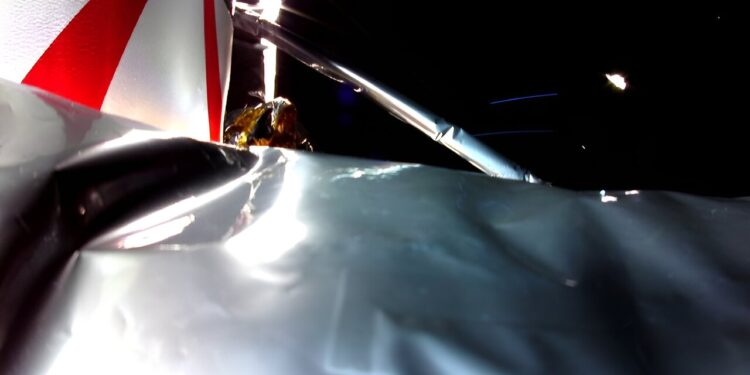Even though Astrobotic, the company that built the Peregrine robot, said a controlled landing on the Moon was no longer possible, it did not rule out a so-called “hard landing” or crash, a prospect that seized space observers.
Is this the little spaceship that could do it?
A private US lunar lander that is hemorrhaging fuel from an onboard explosion early in its journey somehow continues to take selfies and operate scientific instruments during its journey into the space.
Although Astrobotic, the company that built the Peregrine robot, said a controlled moon landing was no longer possible, it did not rule out a so-called “hard landing” or crash, a prospect that seized space observers.
“Peregrine has now been operating in space for over 4 days,” Astrobotic said in its latest update posted to X on Friday, adding that it remains “stable and operational.”
The rate of fuel loss steadily decreased as the pressure inside its tank decreased, meaning the company was able to extend the life of the spacecraft much longer than it had. initially thought possible.
Meanwhile, the American, German and Mexican space agencies were able to power the scientific instruments they wanted to operate on the Moon.
“The measurements and operations of the science instruments provided by NASA on board will provide valuable experience, technical knowledge and scientific data for future CLPS lunar deliveries,” said Joel Kearns, deputy associate administrator for Space Exploration. NASA.
Commercial Lunar Payload Services is NASA’s experimental program in which the space agency paid Astrobotic more than $100 million to ship its Peregrine hardware, part of a strategy to launch a commercial lunar economy and reduce its own overheads.
Astrobotic is the third private entity to fail a soft landing, after an Israeli nonprofit and a Japanese company.
‘Shoot to the net’
Even though it didn’t work this time, NASA officials have made it clear that their strategy of “more shots on goal” means more chances to score, and the next attempt, led by Intuitive Machines, based in Houston, will be launched in February.
Astrobotic itself will get another chance in November with its Griffin lander carrying NASA’s VIPER rover to the lunar south pole.
For now, the Pittsburgh-based company is remaining tight-lipped about Peregrine’s intended destination, leaving enthusiasts to make their own calculations.
Amateur astronomer Tony Dunn used publicly available data provided by NASA’s Jet Propulsion Laboratory (JPL) to plot the spacecraft’s current trajectory, posting a graphic on social media platform colliding with the Moon on January 23.
But “no one can really guess what will actually happen because of the fuel leak”, which could easily derail the project, he told AFP.
Or, Astrobotic could intentionally point Peregrine in another way, such as flying near the moon and shooting into interplanetary space.
While a crash landing on the Moon might satisfy some Astrobotic customers, such as those sending human ashes and DNA to the Moon, it could anger others, such as the Navajo Nation, which had called the shipment of “desecration” of the celestial body.
“I think it would be a shame if they ended their failed mission by littering the surface of the Moon with debris,” Justin Walsh, professor of art history, archeology and science, told AFP. space studies at Chapman University and an Ad Astra Fellow at USC. , adding that humanity has left some 180 tons of material on the surface since the crash of the first Soviet impactor in 1959.
© 2024 AFP
Quote: The space odyssey of the doomed American lunar lander continues… for now (January 13, 2024) retrieved January 15, 2024 from
This document is subject to copyright. Apart from fair use for private study or research purposes, no part may be reproduced without written permission. The content is provided for information only.



